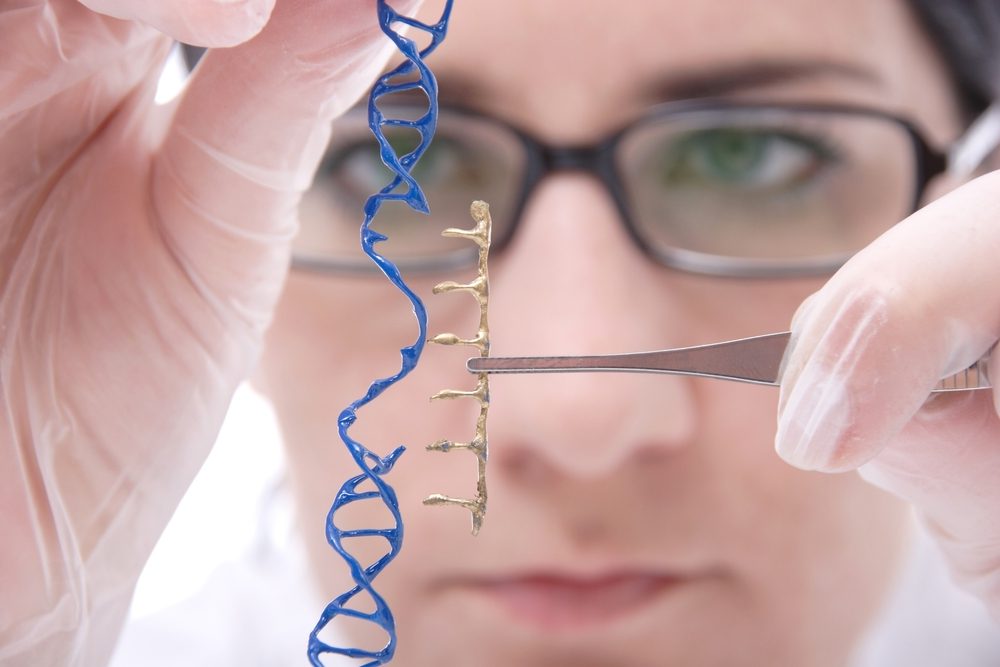Gene-Editing Tool in Ongoing Trial of BIVV003 in Treating Severe Sickle Cell Supported by Early Study
Written by |

A technique called zinc finger nuclease (ZFN) gene editing technology can be used to modify immature red blood cells — called precursor cells — to boost the production of fetal hemoglobin and help ensure red blood cells maintain a normal shape in people with sickle cell disease (SCD), a study shows.
Sanofi has launched a Phase 1/2 trial (NCT03653247) evaluating the safety, tolerability and efficacy of a BIVV003, a gene editing therapy using the ZFN technology (by Sangamo Therapeutics) in adults with severe SCD. This trial, taking place at four U.S. sites, is currently recruiting eligible patients.
ZFN technology findings will be presented by Samuel Lessard, PhD, a researcher at Sanofi, in the poster, “Zinc Finger Nuclease-Mediated Disruption of the BCL11A Erythroid Enhancer Results in Enriched Biallelic Editing, Increased Fetal Hemoglobin, and Reduced Sickling in Erythroid Cells Derived from Sickle Cell Disease Patients,” (abstract No. 974) at the 61st Annual Meeting of the American Society of Hematology (ASH), December 7–10 in Orlando.
Sickle cell is caused by mutations in the HBB gene, which provides instructions for making part of hemoglobin, a protein responsible for transporting oxygen in the blood.
These mutations change the structure of the protein, resulting in the production of abnormal hemoglobin fibers. These fibers tend to stiffen red blood cells, changing their shape from normal disc-like cells to those with a sickle-like shape.
BIVV003 is an investigational gene edited cell therapy being developed under an agreement between Bioverativ, a Sanofi company, and Sangamo.
It uses Sangamo’s proprietary ZFN gene editing technology to modify a short sequence of the BCL11A gene in red blood precursor cells — acquired from the patients’ own hematopoietic stem cells (stem cells that give rise to other blood cells) — to raise production of fetal hemoglobin, the main form of hemoglobin found in fetuses.
Fetal hemoglobin production is normally “switched off” in adults and largely disappears at ages 6 months to 1 year, but artificial ways of introducing fetal hemoglobin show increasing promise in treating SCD by preventing red blood cells from taking on a damaging sickle shape.
Sangamo announced the findings from a proof-of-concept ex-vivo (lab) study aiming to validate the ZFN gene editing technology using immature red blood cell isolated from four healthy donors and one sickle cell patient.
Study findings demonstrated that more than 90% of edited donor cells incorporated genetic modifications in both copies of the BCL11A gene, leading to an increase of 27% to 38% in fetal hemoglobin levels compared to baseline (study’s start).
Edited cells from the SCD patient also tended to incorporate these modifications in both gene copies. As a result, patient edited cells produced up to 28% more fetal hemoglobin compared to unedited cells.
Patient red blood cells obtained from already edited precursor cells were also less likely to change to a sickle-like shape, supporting BIVV003 as a potential cell therapy for SCD, the study reports. Further experiments in red blood precursor cells from additional SCD patients are underway.
Sangamo is also enrolling patients with transfusion-dependent beta-thalassemia (TDT) in the Phase 1/2 THALES trial (NCT03432364) to evaluate the safety, tolerability, and efficacy of ST-400, another experimental gene-edited cell therapy that uses the same gene-editing approach as BIVV003.
The company announced it will present data from the first three THALES patients at the ASH meeting.





